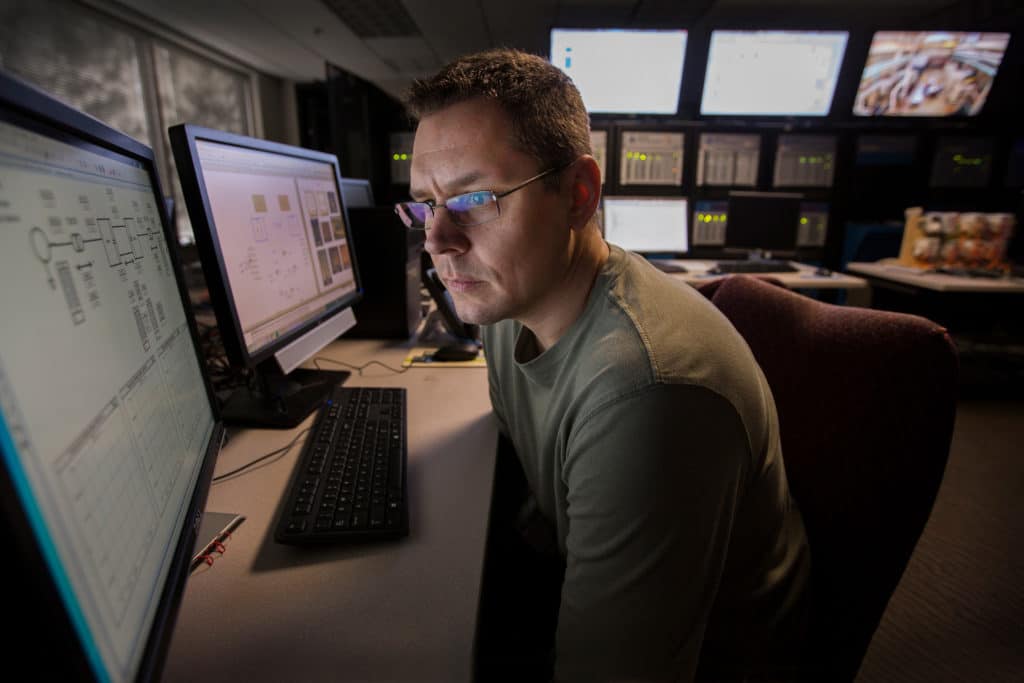Overview
HIL is real-time, closed-loop simulation that tests embedded software and controllers with actual hardware components. HIL represents the bridge between FREEDM’s other testbeds: the Large Scale System Simulation, which is off-line software, and the Green Energy Hub, which supports small-scale hardware demonstrations. The HIL testbed builds upon real-time power system simulation platforms (e.g., RTDS, Typhoon, and OPAL-RT) and incorporates DGI functionality.
When compared to a testbed that features only physical devices, this mixture of real and simulated hardware allows researchers to analyze cyber-physical systems in a safer and more controlled environment. The HIL testbed naturally leads to collaborative research because it requires input from several projects to operate (e.g. DGI, RSC, and the power network simulation all have to be functional for any given use case scenario) and the testbed is remotely accessible by all partner universities.
The Principal Investigator for this project is Dr. Mischa Steurer.
Method
Located at the Center for Advanced Power Systems (CAPS) at Florida State University, the HIL testbed has added sophistication and components every year. Expanded computational power increased the number of DGI nodes supported; adding a VLAN-capable switch reduced the time for network emulation studies; improving remote accessibility opened the testbed to multiple researchers; and configuration changes allowed the use of modular multilevel converters to operate in single-phase inverter mode.
In year 10, the HIL testbed demonstrated all key functionalities of the FREEDM System via controller and power hardware in the loop simulation, including group formation of DGI under power system reconfiguration, Volt/VAR control and fault management.
